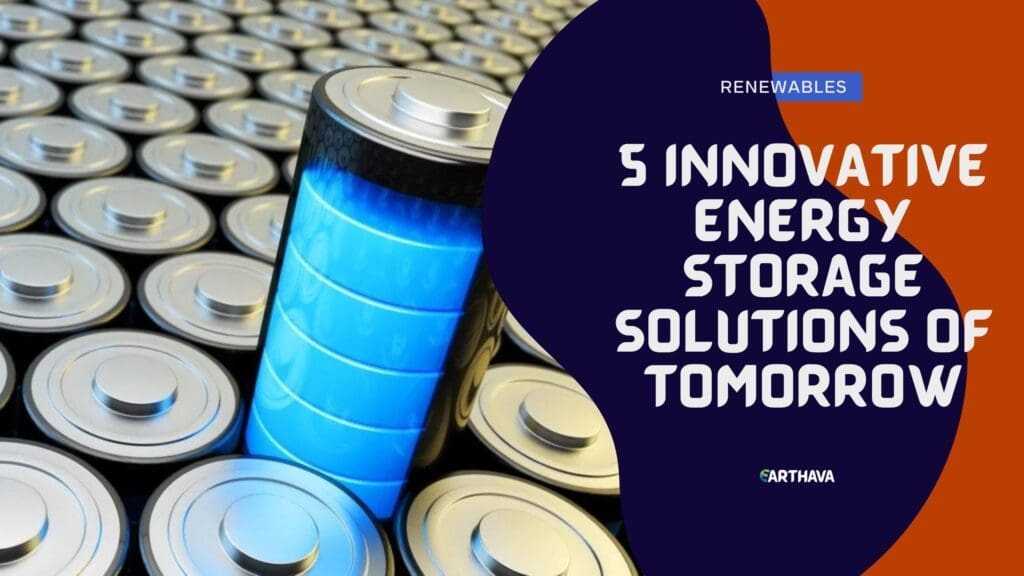These days, it seems like all anyone can talk about is climate change, and with good reason. We recently got word that we don’t have long to turn the environment around before we’re all doomed. And at the center of the climate change conversation is the idea of renewable energy.

In the mission to cut back on nonrenewable energy source use, solar, wind, and nuclear power are hot topics. But none of those sources will matter if we don’t improve our energy storage capacity. Read on to learn why this is so important and what innovative ideas are in the process now.
Why Energy Storage Matters
The power-producing potential of wind and solar energy increases by the day. Some estimates say that by 2050, about half of the world’s energy will come from renewable resources. But we can’t get to that benchmark without advances in energy storage technology.
Power sources like wind and solar are not consistent sources of energy. While it may be sunny or
This is where energy storage comes in. There is more than enough access to sunlight and wind energy across the globe to meet our energy needs. The trick is finding ways to store enough of us to keep us going when the sun goes down.
Current Energy Storage State
If we’re to make it to the future of renewable energy resources, we have to up our storage game. Currently, the United States has about twenty-three gigawatts of storage capacity for renewable energy. That’s equal to about thirty-eight coal plants, less than half a percent of what we have in the country.
About 96 percent of those
Alternative Batteries
One way to approach making energy storage more reasonable is to make sure it’s renewable and ethically sourced. One company working on such a solution is Tesla. They are creating batteries that use less cobalt, a material that often comes from mines in the Democratic Republic of Congo that use child labor.
Other companies are working to improve the
Thermal Storage
Outside of creating better batteries, some scientists are working on developing thermal storage solutions. This technique works to store heat from the sun in water, molten salts, or other fluids for later use. One interesting method of doing this involves using cold as an energy source.
Ice Energy’s Ice Bear system uses the energy gathered from the sun during the day to create a block of ice during the night. Electricity is cheaper during this time, and temperatures are lower, making the process more efficient. During the day, the system uses cold air coming off the block of ice to condense the air conditioning system’s refrigerant.
Compressed Air
Much like the pumped hydroelectric storage method we mentioned earlier, compressed air power storage works based on fluid dynamics. Air, like water, is a fluid and so can hold huge amounts of potential energy. But whereas you have to suspend water to tap its potential energy, air can gain potential energy by being compressed.
Compressed air energy storage systems work by using power generated at the time to, as the name suggests, compress air in a space. During times of peak demand for electricity, compressed air gets fired into a combustion turbine with natural gas to create electricity. This allows plants to use a third of the amount of natural gas they normally would.
Hydrogen
Hydrogen is an enormously powerful energy source and so can be a fantastic energy storage solution. Excess energy can be used to create pure hydrogen by separating hydrogen molecules from hydrocarbons. When you heat up these molecules, the hydrogen atoms break off of them and can be harvested.
Once hydrogen has been isolated, we can store it in fuel cells, engines, or turbines for later use. Best of all, burning hydrogen creates no harmful emissions of any kind. Scientists are currently studying the potential for creating hydrogen from wind power and storing it for later use.
Flywheels
Flywheels are another great option for renewable energy production and storage. They are low-maintenance devices that typically have long life spans. They are highly efficient and have a rapid response time. They can also be connected together into a farm to generate more collective energy than a single flywheel would be able to.
Flywheels work by spinning large rotors inside of vacuums to create rotational energy. These rotors spin up every time the system draws power from the grid. When it comes time to discharge the stored energy, the flywheel slows down and turns into a generator, running on inertia and returning power to the grid.
Learn More About Renewable Energy
Finding a clean renewable energy source is paramount to saving our planet from destruction. However, finding solid energy storage solutions is just as important. Until we can store all that solar energy falling on the Sahara Desert every day, it won’t do us any more good than it’s doing us now.
If you’d like to learn more about the latest in renewable energy, visit the rest of our site at Earthava. We have information about solar, wind, hydro, geo, and more power sources. Check out our information on renewable energy sources today.


